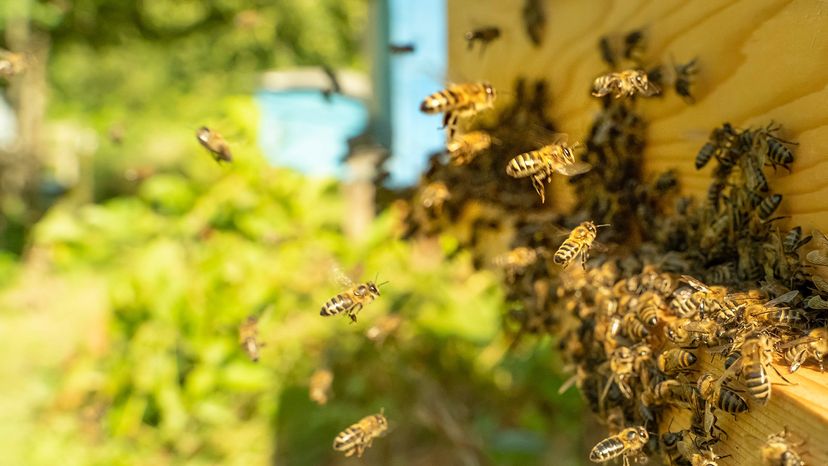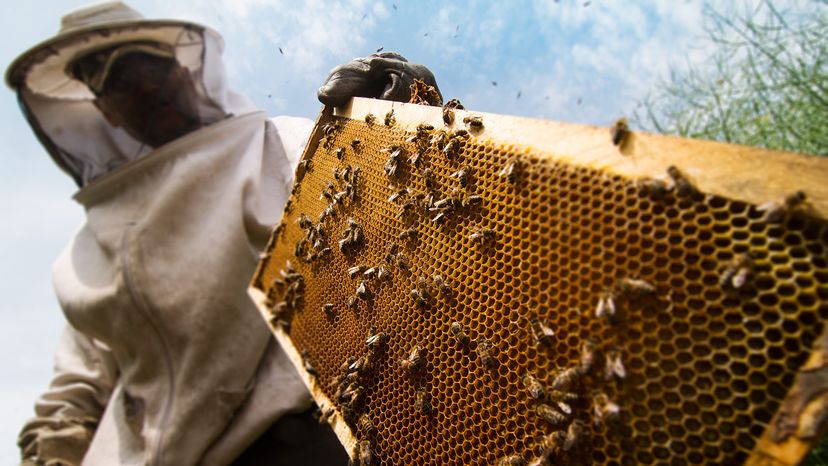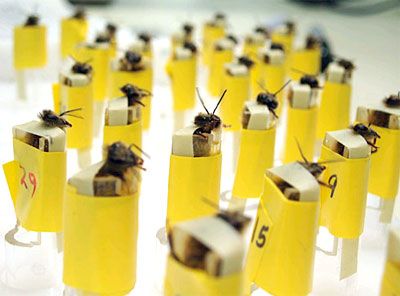So, what's a worried person to do when honeybees show up? First of all, don't panic. "When honeybees are swarming, they're at their most gentle," says Julia Mahood, Georgia master craftsman beekeeper and board member with the Pollinator Stewardship Council. This is because honeybees swarm only when they're searching for a new home, so they're not defending an existing nest. It also helps that they gorge on honey before making this trek, so they don't feel like fighting, she says. People who are nervous or allergic should still take precautions before getting too close, but most of us will be just fine walking around among them.
When you see honeybees swarming it's actually just a fraction of the original hive's population. These bees are known as scout bees. These little buggers are sent out specifically to find a new home. "There's a healthy colony somewhere and they have a biological need to reproduce," Mahood says. "The bees leave the nest with the old queen and look for a new place."
What honeybees are looking for is, ideally, a hollow tree, but in the absence of that, they often turn to structures, like houses. Too often, they set up shop in a cavity that's about 40 liters (1.4 cubic feet or 0.4 cubic meters) in size, so the space between a home's outer wall and the drywall is just perfect (in the eaves or inside of a column are other common spots).
If the scout bees find a suitable location they'll head back outside and "do a little dance" to communicate their findings to the others, Mahood says. Or, in the case of our swarm, they get stuck inside and die. Then, the rest of the honeybees will figure out that there's no hospitable environment to be found and they'll head elsewhere.
Fortunately, that's what happened for us, although it was a nail-biter of a situation for a few days and I did lament the loss of bee life. Once the bees left, my husband sealed up all of the cracks he could find to hopefully prevent future invasions.




